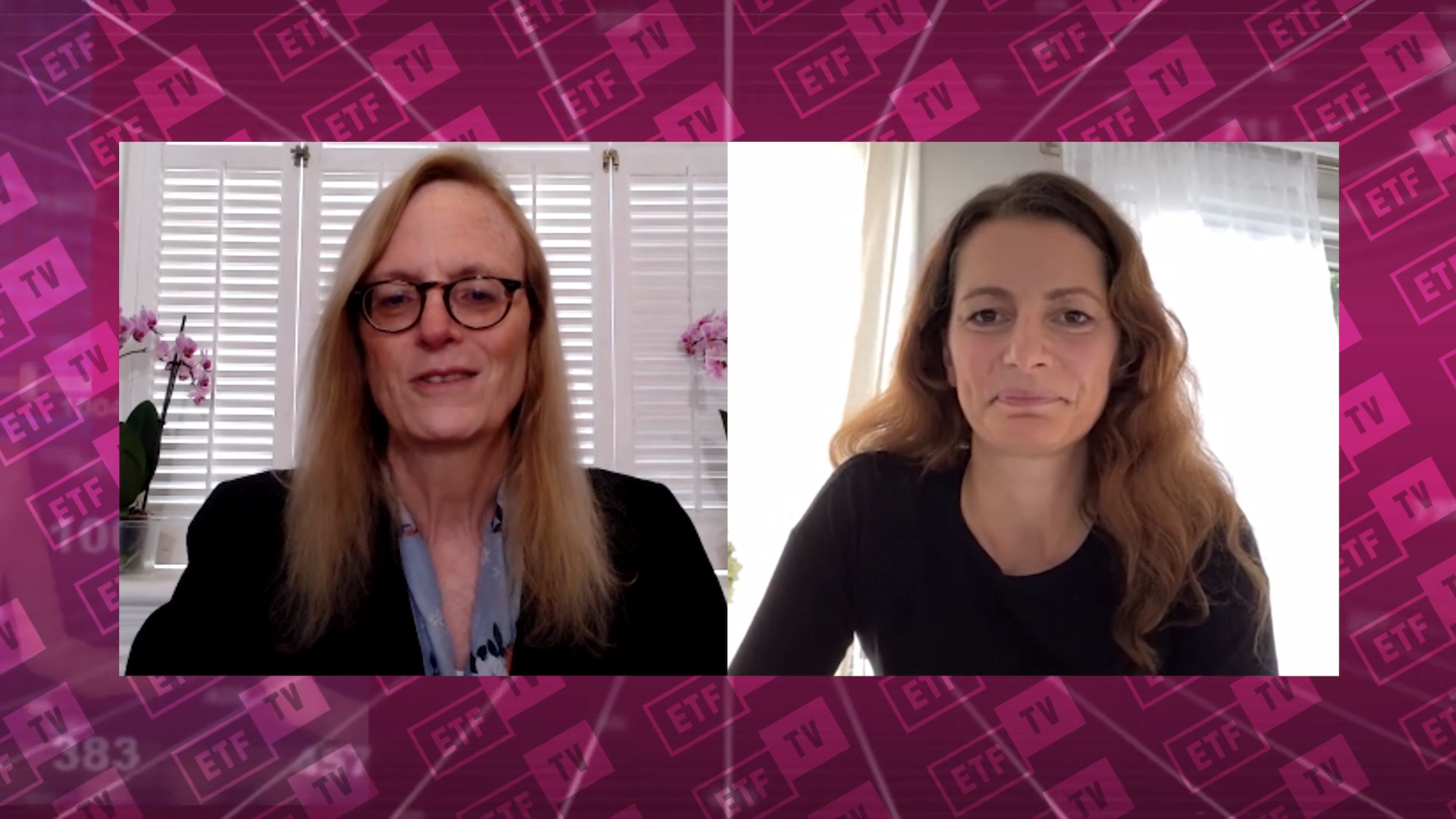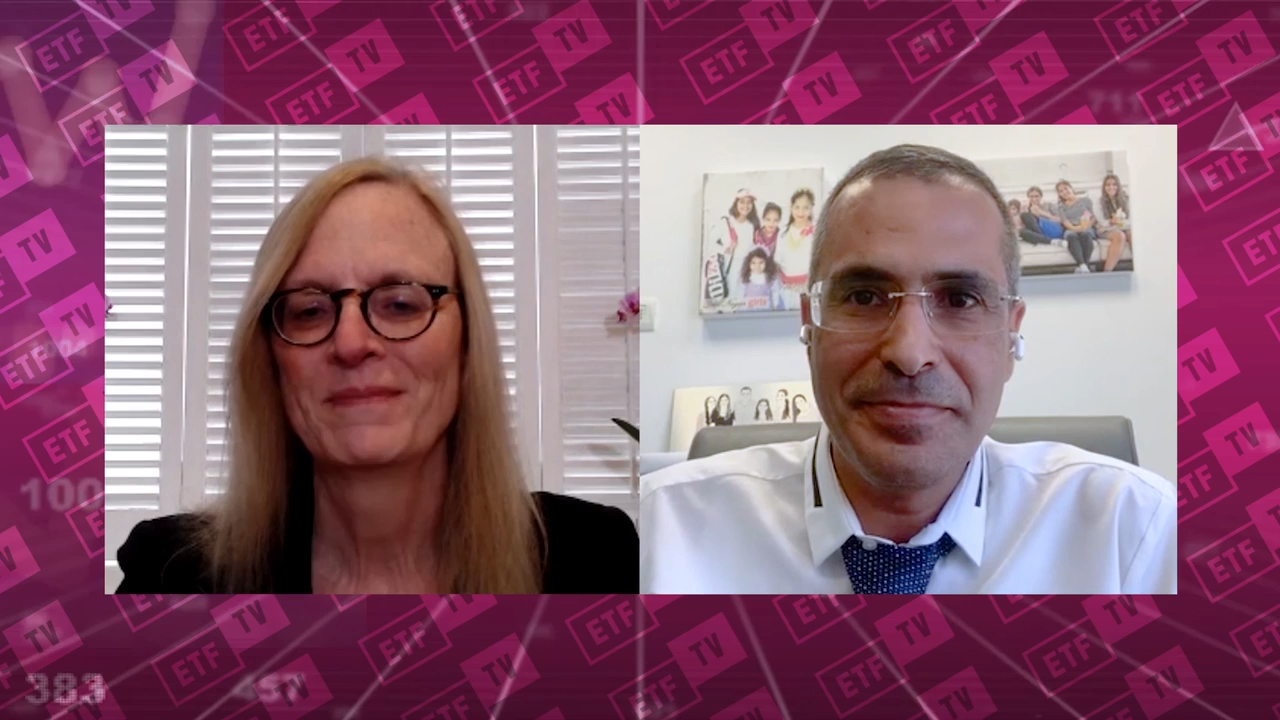The demand for retail construction ETFs. Ep #85
Boaz Nagar of KSM ETFs discusses the demand for retail construction ETFs with Margareta Hricova and Deborah Fuhr
Transcript
[00:00:04] Margareta Hricova Welcome to the ETF TV – your insight into the world of exchange traded funds, issuers and investment. I’m Margareta Hricova, and joining me today is Deborah Fuhr and Boaz Nagar, the chairman of the supervisory board of KSM ETFs.
[00:00:21] Welcome Boaz and Deborah.
[00:00:22] Boaz Nagar Thank you for inviting me, it’s great to see you again.
[00:00:27] Deborah Fuhr Thank you.
[00:00:28] So Boaz, great to see you. Can you tell us about the new KSM Construction ETF that you’ve listed last week in Tel Aviv?
[00:00:35] Boaz Nagar The idea behind the index is to separate the nonresidential companies from the residential companies. And we are trying to target the boom that we see in the residential sector all over the world. And also, of course, Israel is a small country, and the residentials is performing very well. To give you numbers, the nonresidential dating the last 12 months is around 59%, but the residential sector, this index did around 95%.
[00:01:04] Margareta Hricova What type of investors do you expect to use the ETF and how will they use it?
[00:01:08] Boaz Nagar This index is good for a long term investor. Currently we see about 60% of our investors are retail and 40% are institutional. In Israel these sectors have been performing well for more than 10 years, and we also have a new government, that if the government before declared at the beginning that they would decrease the price, this government gave up even on this role and they say they would just give more supply, so all the economics, the interest rates, the monetary policy, the government policy supporting this sector and also the history supporting this sector. We are a small country and everyone has a dream.
[00:01:54] Margareta Hricova That’s great, and there’s been a number of significant changes in Israel when you think about the ETF industry. I think one that was a long time coming was the switching from all the products being structured as ETNs to ETFs, and then the other big changes were foreign ETFs being able to be registered for sale and being able to cross-list. Can you talk a bit about how that has impacted the industry in Israel?
[00:02:19] Boaz Nagar The first thing of switching from ETNs to ETFs was a great success. Before the ETNs were dedicated to more sophisticated clients. The regulation basically made the ETF, or the index fund on the same regulatory regime. What we see right now is that the clients want more liquidity and more work use ETFs, and clients that have less important liquidity, but just still want passive use of the index fund. One of the results was that the issuer of index funds become also ETF fund, so it became simpler that just the liquidity is the difference.
[00:03:00] Secondly, it was a failure, basically, for several reasons. The first reason is that we have a very huge home buyers investment in the Israel market, and the second reason is that we have a very strong Shekel against the Dollar and Euro, etc., so we have a strong currency. That’s limited the foreign issuer with a limited target. Foreign investment that is unhedged to the shekel, it’s less than 10% of the market. That’s the reason that the big names that was doing this double listing with dozens of ETFs in the Tel Aviv Stock Exchange, after three years have less than 1% of their market share.
[00:03:46] Margareta Hricova What is your outlook for the ETF industry in Israel for the rest of 2021 and the next few years?
[00:03:52] Boaz Nagar We are seeing very large inflows into active funds and passive funds, post COVID-19 every month. The majority of the interest is going to the passive industrials and up to the active. In terms of AUM (assets under management), not inflows, if 10 years ago the market was 80% in terms of equity and 20% in passive, so similar to the United States, currently we are 40% on passive funds and 60% on active.
[00:04:23] I believe that in three years we will have equal, meaning 50% of the AUM would be passive and 50% would be active, and three vectors will support this growth. The first vector is, we see more and more thematic indices that are some kind of replacement to the active management. We see big interest on the part of the active funds.
[00:04:48] The second vector is that we see more digital platform of brokers online in Israel, so young people opening accounts on digital platforms. And we see very large inflows from this kind of segment, the non-advised segment and the third vector that I hope happens soon is digital coins. The digital coins have a lot of potential we believe for ETFs. There is a committee in the Israeli markets that want to open this kind of investment for passive investments. So if you take these three vectors I believe that it would take a short time to be equal in terms of passive and active.
[00:05:33] Margareta Hricova That’s very interesting, Boaz. Thank you very much for sharing your insights with us today.
[00:05:37] Boaz Nagar Thank you very much.
[00:05:40] Margareta Hricova Debbie, let’s talk about some of the other news in the ETF industry last week.
[00:05:43] Deborah Fuhr I think we’ve seen a very significant increase in launches in Asia Pacific. Korea’s seen a lot of launches this year, and there were 12 last week, five in China, one in Malaysia, where we haven’t seen a new product in quite some time. There was also one in Hong Kong and one in India. And only six in the US, where typically we would see more coming out of the US. There were three in Brazil, which is another market where we’ve seen quite a few new listings this year, three in Israel. So we’re seeing some countries that haven’t done a lot last year coming to market. And to give you a sense, there’s been 935 new listings, year-to-date, so in the first seven months of the year. At this point last year, there were only 590, so we’ve seen a significant increase.
[00:06:29] The US has 246, last year at this point it was 150.
[00:06:33] Europe has 228 eight, last year it was 164.
[00:06:37] Canada has 97 vs 85. Latin America has 20 vs 1. So we are seeing significant increases in most places around the world, which I think is quite interesting. And the number of closures is not at a record level, so we’re seeing fewer closures.
[00:06:54] When we look at the types of products coming to market, the theme, as you heard from Boaz, has been thematics. He didn’t mention ESG, but we still see a lot of interest globally in ESG products. Active is becoming more popular, also with seven new products last week, and there were 14 cross listings. So at the end of the seventh month of the year, we saw that the S&P closed the month up 2.38. Developed markets XUS are up just a little bit less than half a percent, so not a lot. But we do expect that we’ll see record level of assets in many of the markets around the world for the ETF industry. And on a year-to-date basis, we are likely to see that the net inflows have surpassed all of last year in many of the markets.
[00:07:39] Margareta Hricova Thank you for that update, Debbie, and thank you to our sponsors, Syntax Advisors, to Boaz Nagar, and to all of you for watching.
[00:07:45] To watch prior episodes and to see news from the ETF industry, visit ETFTV.NET.
[00:07:49] ETF TV News does not provide investment advice nor recommend products.


